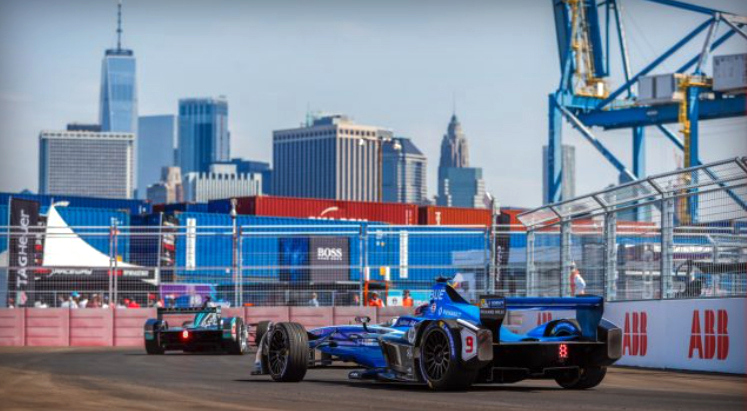Doubleheader in Brooklyn Ends with Audi on Top
Season 4 of the FIA Formula E Championship came to an end with a doubleheader race last week on Brooklyn, New York’s waterfront. The Saturday and Sunday doubleheader race crowned a new drivers’ champion after Saturday’s race and awarded the Teams’ Championship on Sunday.

For the second time since the series’ inception in 2014, Formula E took on the Brooklyn streets for a season-finale doubleheader of its 12 race/10 country/five continent schedule. Race officials and the city have inked a deal to end season racing for the next 10 years, a confirmation that the U.S. is one of the electric car racing series’ biggest targets.
Jean-Eric Vergne Claims Championship Title, Audi Earns Teams’ Title
Heading into the weekend, the tightly-contested driver and team championships meant that the finale of the 2017-18 Formula E season had the potential to swing both title battles either way, which it did. Driving for Team Techeetahs, France’s Jean-Eric Vergne enjoyed a slender lead in both championships over Lucas di Grassi, driver for the Audi Sport Abt Schaeffler team.
The Frenchman secured the driver’s points title Saturday, starting last on the grid and finishing fifth. Vergne was the only driver on the grid of 25 drivers to have scored points in every single race coming into Brooklyn.
In Sunday’s race, the newly crowned Formula E champion Vergne had a new focus—lead his Techeetah team to their first-ever Teams’ Championship. Vergne did his part by winning the race, but his teammate, Andre Lotterer, jumped the starting line and was given a 10-second penalty. Lotterer’s ninth-place finish was low enough to push the Audi team to first place in the Teams’ Championship after finishing second and third behind Vergne.
Next Season, No More Car Swaps
Last January, Formula E unveiled its new Gen2 car for the 2018-2019 season, which begins in December with the Riyadh ePrix in Saudi Arabia. The current cars have a maximum power of 200 kilowatt-hours, limited to 180 kW during races, and they top out at 140 mph. This model has been around since the series started and requires drivers to perform a mid-race car swap because the batteries run out of juice.

The new car will use a 54-kWh battery, allowing the same car to be on the race course the entire race, eliminating car swapping. As in the previous four seasons, teams will be given identical batteries, which will be able to generate up to 250 kW of continuous power, up from 200 kW. As in the past, all teams will race with identical cars with the new Gen2 Chassis and bodies. Where teams can get creative are places such as the electric motor, inverter, powertrain and gearbox.
Since its beginning in December 2014, Formula E has been grabbing the attention of the world’s major automakers. This season Jaguar formed a team and Audi took over the Abt team. For season five, Nissan will replace Renault and BMW, which is currently a technical partner with America’s Andretti Motorsport, is also in. Mercedes-Benz and Porsche are joining for season six.
Racing has long pushed the limits of technology. The Formula E series will help develop more powerful and efficient drivetrain opportunities for everyday electric passenger cars in the future. With the additional major car companies joining Formula E, the future of electric cars is looking very bright.
Related Stories You Might Enjoy–Past Formula E Coverage
Formula E Begins New Season in Hong Kong
Porsche Jumps to Formula E Racing
Green Motorsports: Technology-Driven Excitement

Interesting progress.
Larry, a small point. “The current cars have a maximum power of 200 kilowatt-hours, limited to 180 kW during races,” Can we try real hard to get the power and energy sorted? The energy of the battery is 54 kWh, but the power of the motor (or supply system) is 200/250 kW…
@Pete,
Thanks for the clarification. The bottom line is these fast, electric racecars are fun to watch battle it out. –ed.